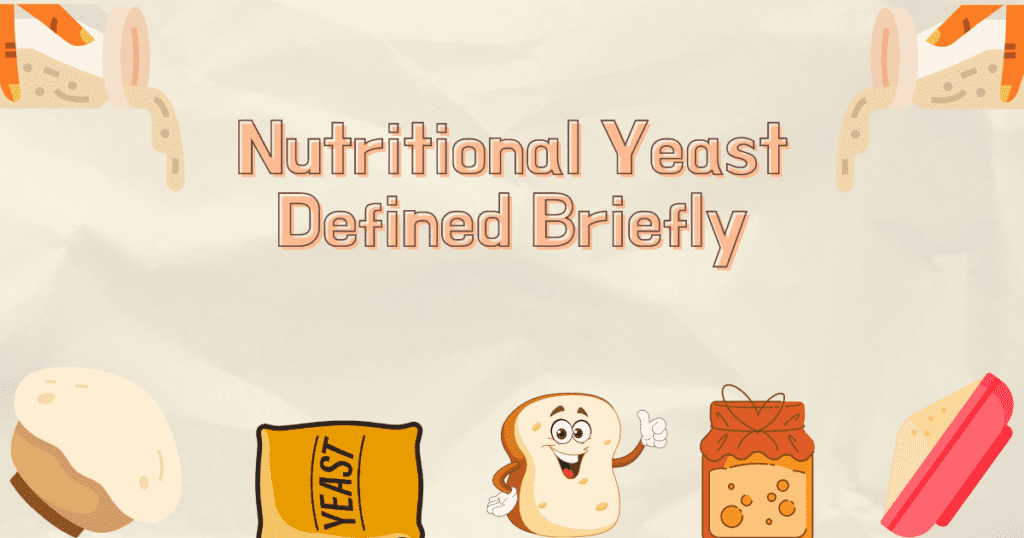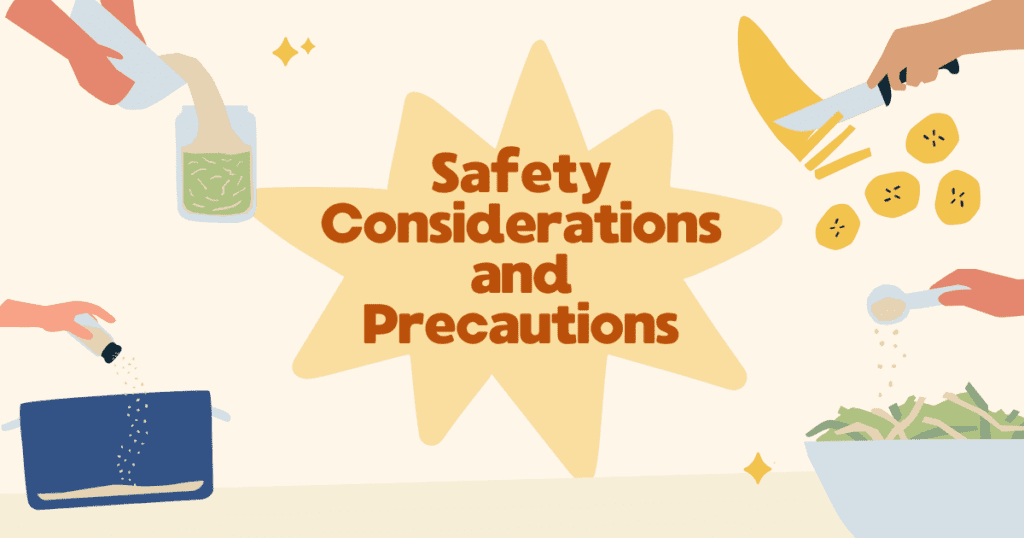Does nutritional yeast expire? Nutritional yeast does indeed expire. Its shelf life typically ranges from 18 months to 2 years when unopened. After opening, it’s best used within several months for optimum freshness.
Nutritional yeast, a deactivated form of Saccharomyces cerevisiae, is a treasured ingredient among vegans and health enthusiasts due to its cheesy flavor and vitamin B12 content.
This dietary supplement is a savory addition to various dishes, offering nutritional benefits and shelf-stable convenience.
To ensure its longevity, one should store it in a cool, dark place, preferably in an airtight container.
Checking the manufacturer’s date and following proper storage instructions can significantly aid in maintaining its potency and preventing spoilage.
Wait! There is more information about nutritional yeast you need to know. Let’s read further.
Nutritional Yeast Defined Briefly

Often hailed as a superfood, nutritional yeast is a staple in health enthusiasts and culinary aficionados’ pantries.
This versatile ingredient brings a savory, cheese-like flavor to a plethora of dishes while packing a substantial nutritional punch.
But does this delectable seasoning have an expiration date? Join us as we delve into the longevity and vitality of nutritional yeast, ensuring your sprinkle remains as beneficial as it is delicious.
What Is Nutritional Yeast
Nutritional yeast, affectionately known as “nooch,” is a deactivated yeast, often a strain of Saccharomyces cerevisiae, sold as flakes, granules, or powders.
It can be sprinkled on snacks and meals or mixed into sauces and dressings for a nutrient-rich zest. Its distinctive property lies in being deactivated, meaning it won’t cause dough or batter to rise as baking yeast does.
Key Nutritional Benefits
- Protein Packed: It’s a complete protein containing all nine essential amino acids.
- B-vitamins Bonanza: Particularly rich in B-complex vitamins, nutritional yeast often includes B12, which is vital for vegans and vegetarians.
- Mineral-rich: Provides zinc, selenium, manganese, and molybdenum.
- Fiber Forward: Contains dietary fiber, which aids in digestion.
- Gluten-Free: Naturally gluten-free, it’s suitable for those with gluten sensitivities.
Types Of Nutritional Yeast
Here is a rundown of two nutritional yeast types.
| Type | Description | Usage |
| Unfortified | Contains only the vitamins and minerals that are naturally produced by the yeast cells. | Perfect for those looking for an unenriched supplement to their diet. |
| Fortified | Has additional vitamins and minerals added during processing, especially B-vitamins. | Ideal for individuals requiring an extra boost of certain nutrients. |
Uncovering Shelf Life Secrets

For those who include nutritional yeast in their diet, knowing its shelf life is crucial to maintaining its savory goodness.
Nutritional yeast is a staple in many vegan diets, cherished for its cheesy flavor and vitamin B-rich profile.
But does it last forever or bow to the inevitable march of time?
Let’s explore the factors that extend or reduce its shelf life and how you can recognize when it’s time to bid farewell to your beloved nooch.
Factors Affecting Shelf Life
Storage conditions play a pivotal role in preserving the freshness of nutritional yeast. Factors include:
- Humidity: Keeping it dry helps prevent clumping and mold growth.
- Temperature: Cooler temperatures can extend its shelf life, while warmer environments may shorten it.
- Exposure to light: A dark cupboard or storage space shields the yeast from light, which can degrade its quality over time.
- Airtight containers: Storing nutritional yeast in an airtight container removes moisture and contaminants. Hence, its shelf life increases.
Typical Expiry Timelines
Typically, nutritional yeast comes with a shelf life of two years when unopened and stored properly.
Once opened, strive to use it within six to twelve months for optimal flavor and potency. Below is a handy table outlining this timeline:
| Condition | Shelf Life |
| Unopened | Up to 2 years |
| Opened | 6-12 months |
Signs of Spoilage
Even the most resilient foods can get spoiled; nutritional yeast is no exception. Be watchful for these telltale signs of spoilage:
- Color changes: If the typically yellow flakes take on an unusual hue, it’s time to toss them out.
- Off smells: A sudden sour or unpleasant aroma is a clear indicator of spoilage.
- Strange taste: Nutritional yeast should have a cheesy, nutty flavor. A bitter or off-taste means it’s past its prime.
- Visible mold or moisture: Any signs of mold or excess moisture signal that the nutritional yeast is no longer safe to consume.
By remaining vigilant and storing your nutritional yeast correctly, you can ensure that it remains a flavorful and nutritious addition to your meals well within its shelf life.
Ideal Conditions for Nutritional Yeast
Nutritional yeast is a powerhouse of flavor and nutrition, prized for its savory, cheesy taste and impressive nutrient profile. However, like any food product, its shelf life can be significantly affected by how it is stored.
Maintaining ideal storage conditions is crucial to keep your nutritional yeast fresh and potent. This involves managing temperature and humidity and choosing the right container to preserve its quality.
Let’s dive deeper into how these factors can influence ideal conditions of nutritional yeast.
Temperature and Humidity
Maintaining the perfect temperature and humidity levels is essential to extending the shelf life of nutritional yeast.
This flavorful ingredient prefers a cool, dry place away from direct sunlight and heat sources. The optimal temperature range is between 50 to 70°F (10 to 21°C).
You must ensure low humidity, as excess moisture can lead to clumping and the potential growth of unwanted bacteria or mold, which can spoil the yeast.
You can use a hygrometer to monitor the humidity levels and ensure they stay below 60%.
Container Types
Nutritional yeast comes in various forms, and the container you use for storage makes a significant difference.
Keep it in an airtight container that prevents moisture and air exposure. Glass jars with tight-sealing lids or heavy-duty plastic containers with snap-on lids are excellent choices.
If you’ve purchased it in bulk, consider transferring it to smaller containers to minimize air exposure each time you use it. A jar with a wide mouth can also make scooping easier without creating a mess.
Location Insights
The location of storage can greatly influence the lifespan of your nutritional yeast. Seek a spot in your kitchen away from heat-generating appliances like ovens or dishwashers.
A pantry or cabinet you seldom use or open can be ideal to protect the yeast from fluctuations in temperature and light.
Additionally, avoid placing it near strong-smelling foods, as nutritional yeast can absorb odors, altering its natural taste.
Culinary Tricks for Older Batches

Stepping into the kitchen and discovering an older batch of nutritional yeast can seem like a culinary dead-end.
But there’s life yet in the aged flakes known for their savory, cheesy essence!
Before considering the unceremonious disposal, embrace the opportunity to innovate and revitalize dishes.
Transforming what could be waste into an ingredient of worth requires a bit of creativity, which can invigorate both the palate and the plate.
Here are some culinary tricks to give older batches of nutritional yeast a delicious second life.
Taste Adjustments
As nutritional yeast ages, its robust flavor can diminish. To counter this, consider enhancing the taste with supplementary seasonings. For instance:
- Boost umami – Add a splash of soy sauce or a pinch of garlic powder to awaken the natural savory essence.
- Amplify with acidity – A squeeze of lemon or a dash of apple cider vinegar can elevate the flavor profile.
- Heighten cheesiness – Combine with a sprinkle of mustard or turmeric powder for a richer, cheese-like experience.
Recipe Adaptability
Not all recipes call for fresh nutritional yeast. Sometimes, older batches can perform just as admirably with the right modifications.
Be it in spreads, sauces, or dressings, adjust the quantities to taste:
| Recipe Type | Fresh Quantity | Adjusted Quantity for Older Yeast |
| Cheesy Sauces | 1/4 cup | 1/3 cup |
| Pesto Spreads | 2 tbsp | 1 1/2 tbsp + additional seasonings |
| Salad Dressings | 1 tbsp | 1 + 1/4 tbsp + extra herbs |
Creative Uses in Meals
Nutritional yeast is a versatile element that you can use in many culinary applications. Consider these novel approaches to infuse it into meals:
- Toast it – Lightly toasting the yeast can revive its nutty, cheesy notes.
- Breading – Mix with breadcrumbs for a unique coating on tofu or tempeh.
- Seasoning blend – Create a custom spice mix for popcorn, stir-fries, or roasted vegetables.
By integrating these creative tweaks, older nutritional yeast can still become a star ingredient, offering depth to various dishes that satiate and surprise the taste buds.
Safety Considerations and Precautions

Understanding nutritional yeast’s shelf life and expiration is crucial for culinary excellence and safeguarding your health.
While non-perishable by nature, this beloved seasoning can deteriorate over time. Taking the right safety considerations and precautions can prevent unwanted symptoms from consuming expired products.
Let’s delve into what you need to know to ensure your nutritional yeast remains a safe and tasty addition to your meals.
Health Implications of Expired Yeast
Consumption of expired nutritional yeast may not always lead to direct health consequences, but it’s a risk that is not worth taking.
As time passes, essential nutrients may degrade, potentially diminishing the product’s health benefits.
On rare occasions, an expired product that’s been improperly stored could harbor pathogenic bacteria, leading to foodborne illnesses.
To prioritize your well-being, always monitor the expiration date and storage conditions.
Visual and Olfactory Warnings
Inspecting nutritional yeast before use is a simple yet effective step in avoiding the pitfalls of using an expired product. Be on the lookout for:
- Color changes, suggesting a compromise in freshness.
- Clumping, which could indicate moisture and possible spoilage.
- The presence of mold or other unusual growths indicates that the product should be discarded immediately.
A notable change in smell is another red flag. Nutritional yeast should have a pleasant, cheesy aroma. Any sour or off odors suggest it’s time to replace your supply.
Best Practices for Disposal
If your nutritional yeast has expired, it’s important to dispose of it properly. Avoid the temptation just to toss it aside. Here are some best practices for disposal:
- Seal the expired yeast in a bag to prevent spillage.
- Dispose of it in a trash receptacle with a lid to prevent attracting pests.
- Consider composting it if your local facility allows yeast products, turning waste into nutrient-rich soil.
Adherence to these steps will ensure you manage expired products responsibly, maintaining a clean and safe cooking environment.
Frequently Asked Questions (FAQs)
What Is the Shelf Life of Nutritional Yeast?
Nutritional yeast typically lasts for two years unopened. Once opened, keep it airtight and store it in a cool, dry place. It can last up to a year this way.
How to Tell If You Have a Bad Nutritional Yeast?
Check for changes in color, texture, and smell. If it appears clumpy, discolored or has an off smell, it’s best to discard it. Mold or moisture inside the container is also a bad sign.
Can Bad Nutritional Yeast Make You Sick?
Using nutritional yeast past its expiry may lead to digestive discomfort. While it’s rare to cause food poisoning, fresh is always safer and ensures optimal flavor.
Does Refrigerating Nutritional Yeast Extend Its Life?
Yes, refrigeration can extend nutritional yeast’s life. Cool temperatures reduce the risk of degradation and spoilage. This is particularly helpful in warm climates or during summer months.
Cessation
We believe after reading this comprehensive article, you got the answer to your question, “Does nutritional yeast expire?” Indeed, it does expire like many other food products.
Nonetheless, by storing it properly and heeding expiration dates, you can ensure its freshness and enjoy its benefits. Remember to check for changes in color, taste, and smell every time you open a new container.
Trust your senses, stay nutritious, and most importantly, stay with Fitgenclub!
Sources
https://enewsletters.k-state.edu/youaskedit/2017/12/14/using-expired-yeast-for-bread/
https://en.wikipedia.org/wiki/Yeast
Disclaimer
This article is written to share general yet reliable information and isn’t a substitute for professional medical advice from qualified healthcare professionals and fitness experts.
- Sona Masoori Vs Basmati Rice Nutrition: Health Showdown - March 15, 2025
- 1 Lb Raw Chicken Breast Nutrition: Lean Protein Breakdown - January 25, 2025
- 5 Oz Cooked Chicken Breast Nutrition: Lean Gains! - January 19, 2025




